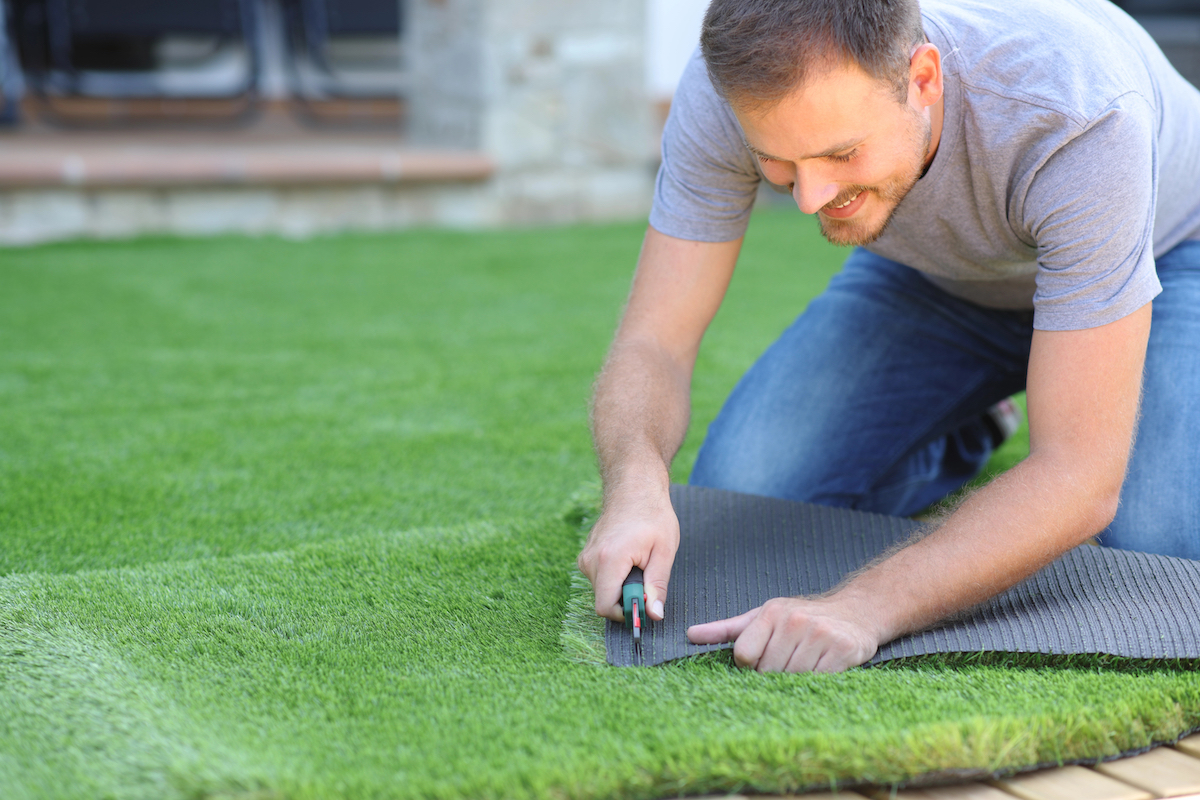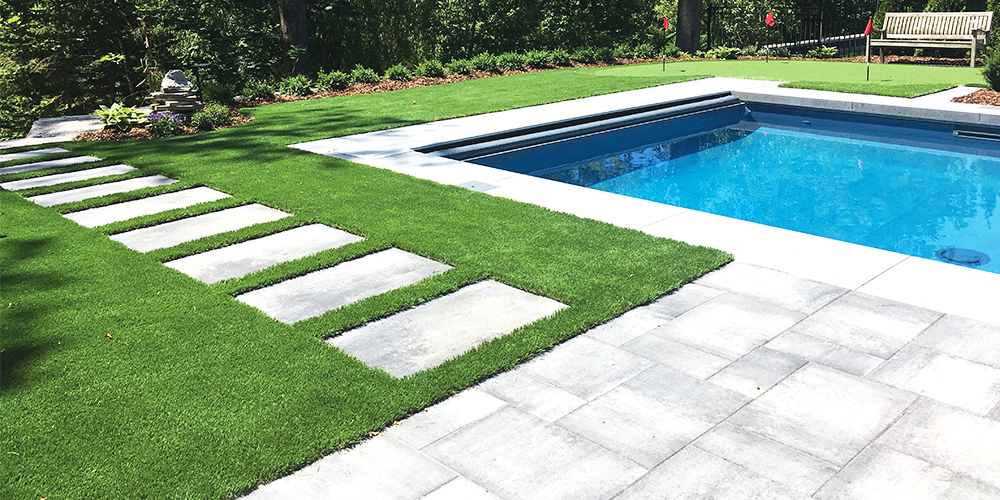Top Arizona Turf Suppliers Offering a Natural-Looking Lawn Alternative
Wiki Article
Look Into the Environmental Conveniences of Opting for Artificial Lawn Solutions
The fostering of synthetic grass services offers a compelling opportunity to attend to pushing environmental obstacles. By significantly reducing water usage and reducing the application of hazardous chemicals, these alternatives not only advertise sustainable landscape design yet additionally protect local environments. The lower carbon impact connected with decreased maintenance activities contributes to a more lasting method to land administration. The implications of these benefits extend beyond plain conservation efforts, raising questions about their long-lasting effect on environment preservation and total ecological balance. Exploring these dimensions discloses an intricate interaction worth taking into consideration.Water Preservation Conveniences
Among one of the most significant advantages of synthetic grass is its capacity to save water. Standard yard lawns call for considerable watering, especially in areas vulnerable to dry spell or water constraints. In comparison, synthetic grass does not need watering, dramatically reducing the overall demand for water resources. This attribute is particularly useful in dry regions where water shortage is a pushing problem.By removing the requirement for normal watering, synthetic grass adds to sustainable landscape practices and aids reduce the ecological impact of excessive water intake. The conservation of water prolongs to the decrease of overflow, which can lead to soil disintegration and waterway contamination.
In addition, the installment of synthetic grass enables communities and home owners to allocate water resources extra effectively, concentrating on essential usages such as drinking water and farming. The shift towards synthetic lawn not only advertises liable water use but likewise straightens with more comprehensive environmental objectives targeted at preserving natural deposits.
As areas increasingly prioritize sustainability, the water conservation benefits of synthetic grass offer a compelling situation for its fostering in residential and business landscape design projects.
Reduced Chemical Use
The transition to synthetic grass significantly lowers the dependence on chemical treatments commonly made use of in all-natural yard upkeep. Traditional lawn administration commonly entails the application of plant foods, herbicides, and pesticides to promote development and control pests. These chemicals can position risks to human health, regional wild animals, and the environment, contributing to dirt and water contamination.On the other hand, synthetic grass removes the requirement for these dangerous substances. As soon as set up, it requires minimal maintenance, mostly consisting of regular cleaning and seldom infill replenishment. This decrease in chemical use not only benefits the prompt setting yet additionally adds to wider environmental security. By decreasing the launch of synthetic substances right into the environment, synthetic grass promotes much healthier soil and water supply.
Additionally, the absence of chemical overflow related to synthetic grass installments aids shield local rivers from air pollution, sustaining marine life and keeping biodiversity. Arizona turf. As areas progressively prioritize lasting techniques, deciding for man-made lawn presents a feasible service that straightens with environmental preservation objectives. Through this change, residential property proprietors can enjoy lavish environment-friendly spaces without endangering eco-friendly health and wellness, leading the way for a more sustainable future
Reduced Carbon Impact

Furthermore, the installation of man-made lawn can result in substantial water preservation. All-natural grass call for considerable amounts of water for irrigation, which not just includes to the carbon impact associated with water extraction and treatment however additionally pressures neighborhood water resources. In contrast, synthetic grass requires marginal upkeep, calling for no watering, thereby substantially lowering water use and its linked power prices.
In addition, the longevity of synthetic my response grass adds to its lower carbon influence. With a life-span of approximately 15 years or even more, the requirement for regular replacements is decreased, resulting in less waste and reduced power usage in production and dealing with conventional turf options. In general, synthetic grass offers a lasting alternative for ecologically mindful landscaping.
Environment Conservation
Environment preservation is a critical factor to consider in the argument over landscape design choices, specifically when comparing synthetic grass to natural yard. All-natural turf lawns often call for substantial maintenance, consisting of using plant foods, pesticides, and herbicides, which can detrimentally affect neighborhood ecological communities. These chemicals can leach right into the soil and rivers, hurting indigenous plants and animals and interrupting neighborhood habitats.
On the other hand, synthetic grass provides a possibility to decrease the eco-friendly footprint of landscape design. By choosing artificial turf, homeowners can lessen the disruption of all-natural environments related to typical lawn treatment techniques. Synthetic grass eliminates the demand for hazardous chemicals, therefore safeguarding neighboring wild animals and keeping the integrity of bordering ecosystems. The setup of man-made lawn can lead to the conversion of previous grass areas into more biodiverse landscapes, such as pollinator gardens or native plant areas, which can sustain regional wild animals.
Eventually, the shift to fabricated lawn not just saves water and minimizes upkeep initiatives yet likewise promotes a more harmonious relationship in between human tasks and the native environment, promoting habitat conservation while doing so.
Long-Term Sustainability
Lasting sustainability is a crucial variable in reviewing the benefits of synthetic grass over traditional turf lawns. Among one of the most substantial benefits of man-made turf is its resilience; it can last up to 15-20 years with marginal maintenance, whereas all-natural lawn requires constant reseeding and replacement. This longevity lowers the requirement for constant sources, such as water, fertilizers, and chemicals, which are important for preserving a healthy yard lawn.In addition, man-made turf adds to a reduction in carbon discharges associated with grass care tools. Traditional grass typically call for gas-powered mowers, leaners, and blowers, all of which add to air pollution. Phoenix turf companies. In contrast, synthetic grass eliminates the demand for such equipment, promoting a cleaner setting
Furthermore, the manufacturing of artificial grass increasingly he has a good point uses recycled products, enhancing its sustainability profile. As suppliers adopt eco-friendly practices, the ecological impact of synthetic grass proceeds to imp source lessen.

Verdict
The fostering of synthetic grass remedies offers substantial environmental advantages, consisting of considerable water conservation, reduced dependence on damaging chemicals, and a lower carbon impact. Artificial grass help in protecting all-natural habitats by lessening land disturbance and promoting lasting sustainability with the usage of resilient products. Jointly, these elements emphasize the potential of man-made lawn to contribute favorably to ecological health and use a sensible alternative to standard landscape design practices in an increasingly resource-conscious world.In comparison, fabricated turf does not require watering, significantly decreasing the total need for water resources. By lessening the launch of synthetic compounds right into the ecosystem, synthetic grass advertises much healthier soil and water systems.
Furthermore, the installation of man-made lawn can result in substantial water conservation. In comparison, fabricated lawn needs marginal upkeep, calling for no watering, thus considerably decreasing water usage and its associated power expenses.

Report this wiki page